Make the BEST Korean fried chicken with super crispy, crunchy buttermilk fried chicken pieces tossed in a mouthwateringly delicious, sweet, spicy gochujang sauce!
I’ve already shared my favorite method for the very best buttermilk fried chicken breasts, but now it’s time to level things up with this sweet and spicy Korean fried chicken recipe from South Korea (yangnyeom chicken – aka the “other KFC”).
What makes Korean style chicken so special? After marinating the meat in buttermilk and coating it in a super crispy batter (thanks to baking powder and cornstarch), the chicken is deep-fried and tossed in a sticky, spicy, sweet Korean sweet chili sauce made with flavorful ingredients like garlic, ginger, soy, brown sugar, and gochujang.
Because of the ingredients and method, it maintains its crispiness for longer than regular fried chicken and helps it hold up well to being tossed in a sauce. The result is chicken that is perfectly tender and juicy inside, crispy, crunchy outside, and packed with bold flavors. Enjoy it as an addictive appetizer, snack, or main.
INGREDIENTS FOR KOREAN FRIED CHICKEN
THE CHICKEN MARINADE
- Chicken breasts: You’ll need boneless, skinless chicken breasts. To save time, buy it pre-diced. This method also works with chicken wings, chicken thighs, and drumsticks, though their frying time will vary.
- Buttermilk: The acidity in buttermilk helps to make for super tender deep-fried chicken and infuses the meat with heaps of flavor. If you don’t have buttermilk, you could make a buttermilk alternative.
- Salt and white pepper: To season.
THE KOREAN CHICKEN CRISPY COATING
- Flour: All you need is regular all-purpose flour. Use a gluten-free all-purpose flour blend (like Bob’s Red Mill or King Arthur’s) if necessary.
- Cornstarch: Replacing a portion of the flour with cornstarch (or potato starch) will help make a really crispy chicken batter. Potato starch or rice flour works too.
- Baking powder: Baking powder draws moisture from the surface of the chicken, making it dryer for an even crispier, fluffy crust. Don’t substitute baking soda.
- Seasonings: You need a blend of garlic powder, paprika, sea salt, and black pepper.
SWEET AND SPICY KOREAN CHILI SAUCE
- Gochujang: (aka Korean red chili paste) is a popular spicy, tangy, slightly sweet, fermented product. You can purchase it from most major supermarkets/Asian stores.
- Brown sugar: Or use honey/a mix of both. The sweetness balances the spice and tang perfectly in the sauce.
- Rice vinegar: You can use red or white rice vinegar, though mirin would also work.
- Soy sauce: You can use dark, light, or reduced-sodium soy sauce. If you’re gluten-free, tamari or coconut aminos are great substitutes.
- Sesame oil: Use toasted sesame oil for a wonderfully toasty nutty depth.
- Aromatics: Fresh ginger and garlic make this a flavor-packed Korean chicken sauce.
HOW TO MAKE THIS KOREAN FRIED CHICKEN
MARINATE THE CHICKEN
First, pat the chicken dry with a paper towel, then chop it into 1-inch cubes.
Then, transfer them to a large mixing bowl, sprinkle with salt and pepper, and add the buttermilk, mixing it well. Wrap/cover the bowl, then place it in the refrigerator to marinate for 6 hours or overnight.
PREPARE THE GOCHUJANG SAUCE
Mince or grate the ginger and garlic, then combine them with the remaining sauce ingredients (rice vinegar, soy sauce, sesame oil, gochujang, and brown sugar/honey) in a small bowl. Mix thoroughly and set aside.
PREPARE THE CRISPY COATING
In a large, wide, shallow bowl, combine the flour, cornstarch, baking powder, and seasonings (garlic powder, paprika, salt, and pepper). Stir well.
Once the chicken has marinated, transfer the chicken to the flour mixture, shaking off any excess buttermilk first. Make sure every piece is fully coated.
FRY THE CHICKEN
Prepare a large, heavy-based saucepan or Dutch oven (or use a deep fryer) by adding several inched of oil to the pan. Then heat it over medium until it reaches 350-375ºF/176-190ºC.
Carefully lower batches of the chicken to the pan – just enough for a single layer with plenty of space in between. Fry them for 3-5 minutes until they’re cooked through and golden brown all over.
Then, transfer the batch of chicken to a wire rack above paper towels to drain while you cook further batches.
ASSEMBLE
When all the chicken is fried, pour the chili sauce over it in a large bowl and toss to thoroughly coat. Then, optionally, garnish with finely sliced green onion, sesame seeds, and Korean chili flakes.
Alternatively, serve the Korean gochujang sauce alongside the fried chicken pieces as a dipping sauce.
SERVE
Enjoy the Korean fried chicken as an appetizer, snack, or part of a larger meal with side dishes like fresh slaw, pickled radishes, kimchi, potato salad, spinach or seaweed salad, steamed or fried rice, and/or pajeon (veggie pancakes). Some people also like it in a salad or stir-fry and/or with beer or soju.
TIPS FOR PERFECT KOREAN FRIED CHICKEN
- Pat the chicken dry: This will help it achieve the crispiest exterior.
- Don’t overcrowd the chicken: Only fry enough for a single layer with plenty of space between the pieces, working in batches. Otherwise, it will reduce the oil temperature.
- Ensure the oil is at the right temperature: Use a thermometer to monitor the temperature and adjust it if needed. It shouldn’t go below 325ºF/163ºC. The ideal range is 350-375ºF/177-190ºC. This ensures crunchiness and prevents excessive oil absorption.
- For extra crispy chicken: Double fry it! Do the first frying at 345ºF/174ºC, leave it to rest for 5 minutes, then the second frying at 375ºF/190ºC for 2-3 minutes until it’s more golden-brown with a super crunchy crust.
- Tweak the sauce flavors: Give it a taste and adjust anything to your liking. I.e., extra spice (with gochujang), sweetness, acidity, etc.
- For the best flavor: Toss the chicken into the sauce immediately after frying to enhance its adherence and overall flavor. If you cook the chicken in batches, add the sauce in batches, too – just enough to coat the cooked pieces each time.
- Eat it immediately: The longer it sits in the sauce, the softer it will become. So eating it immediately, while it’s still warm, ensures the crispiest texture.
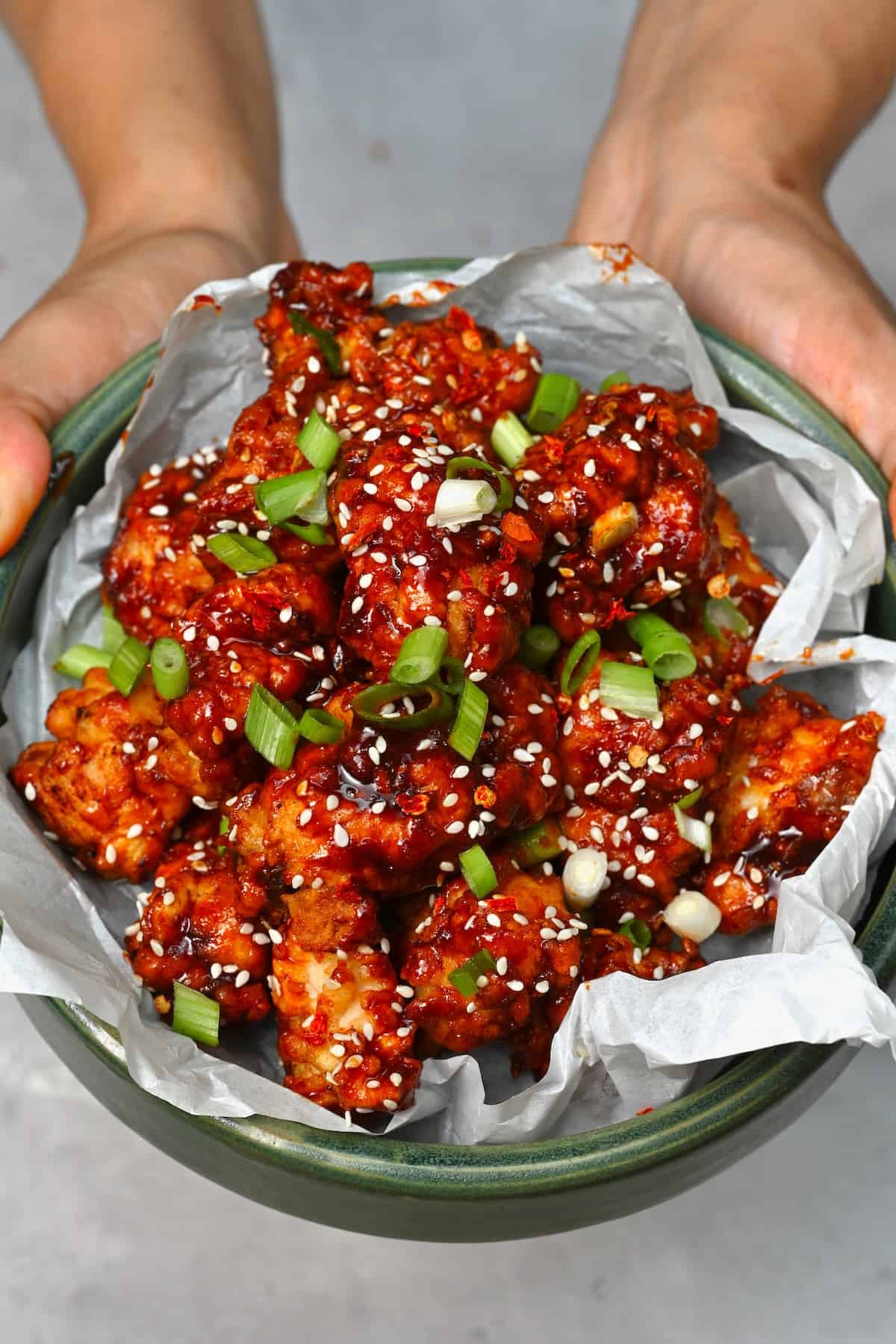
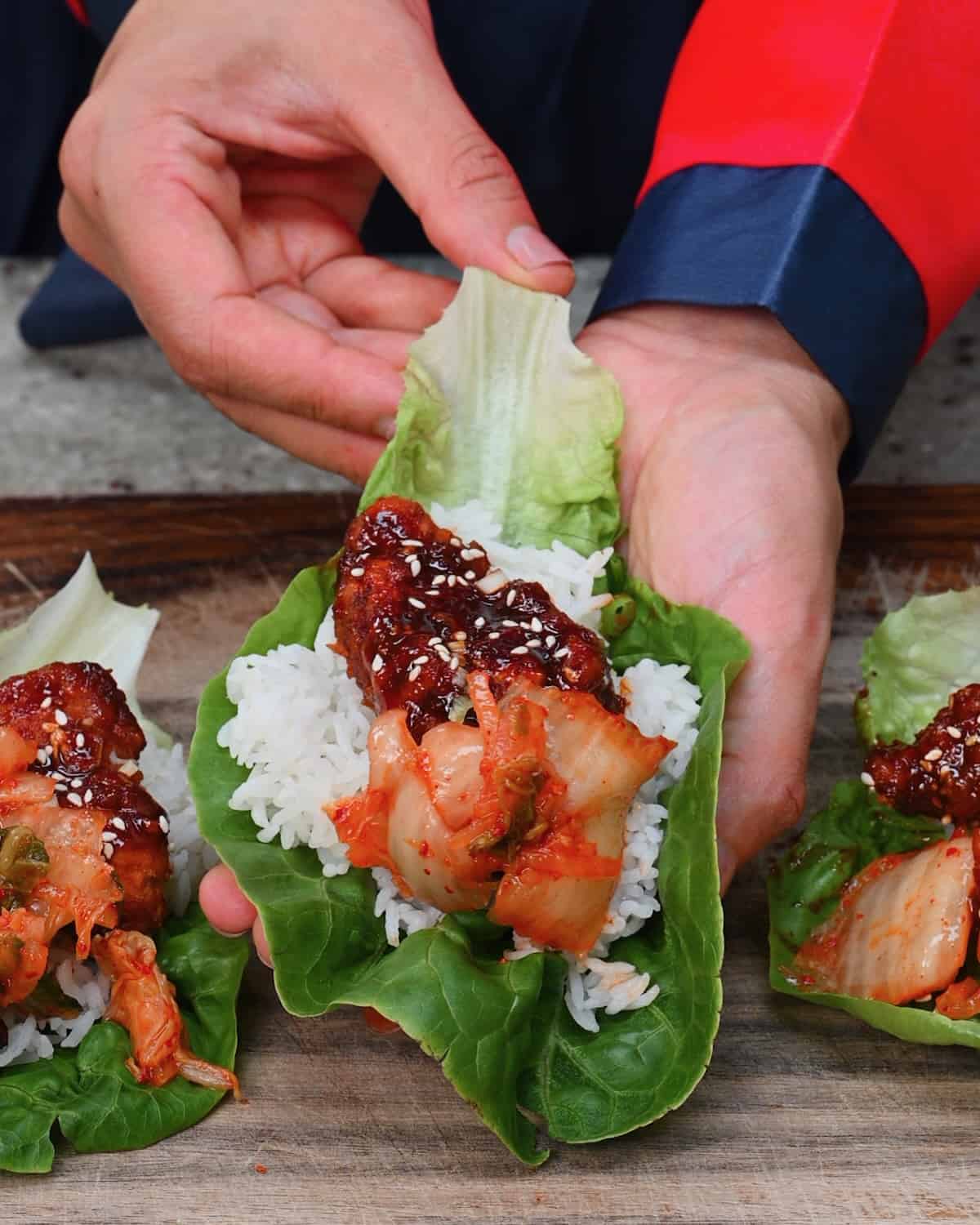
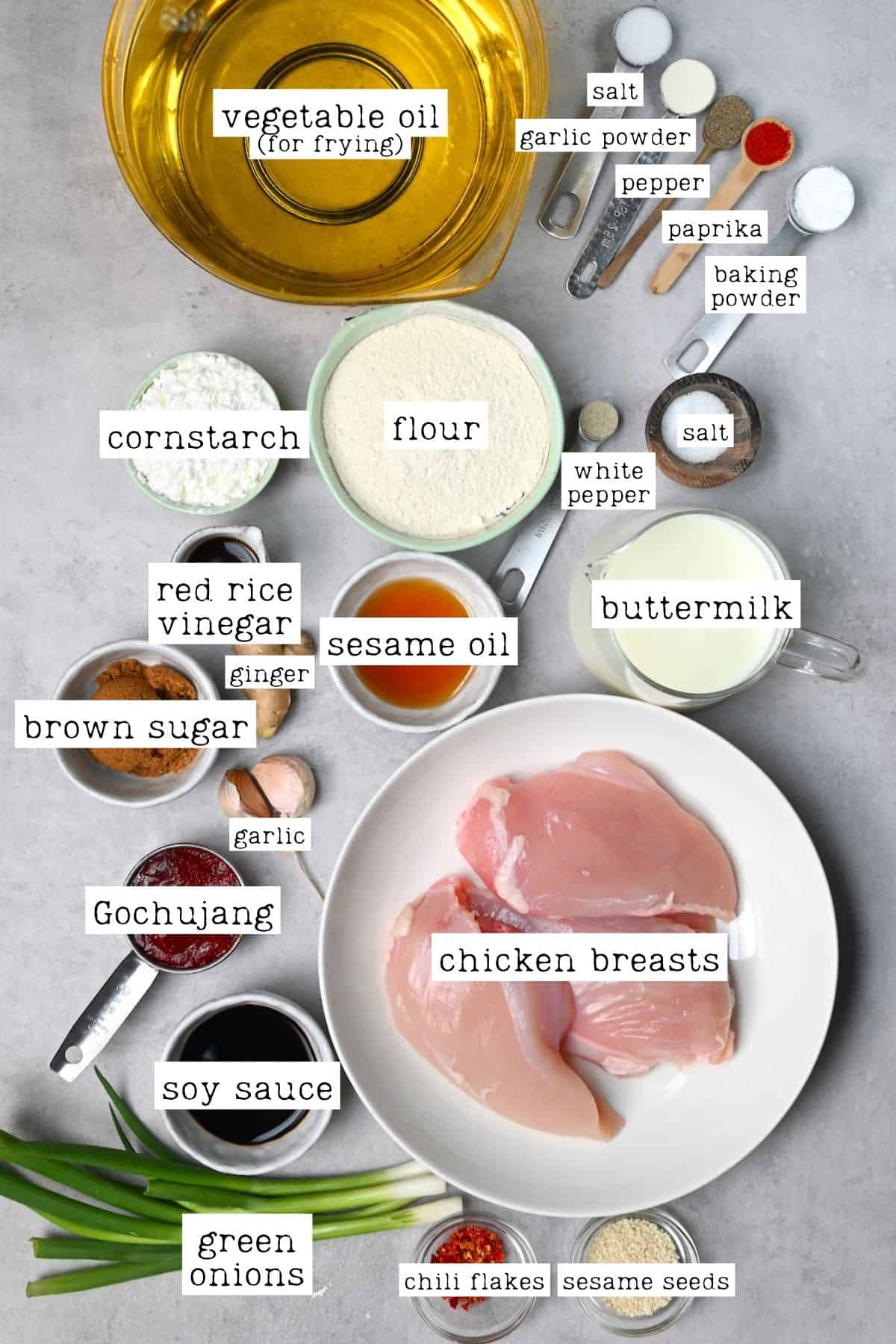
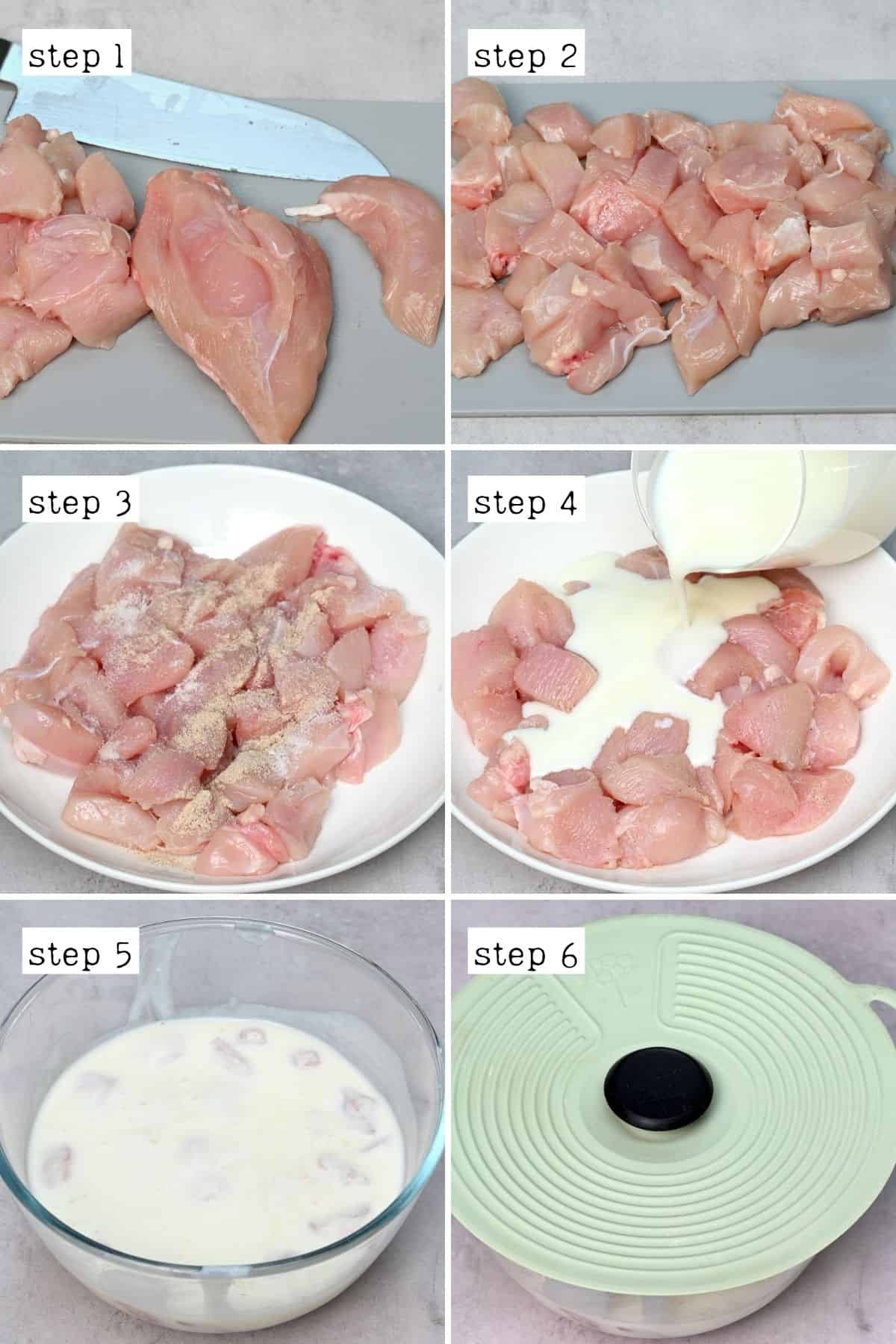
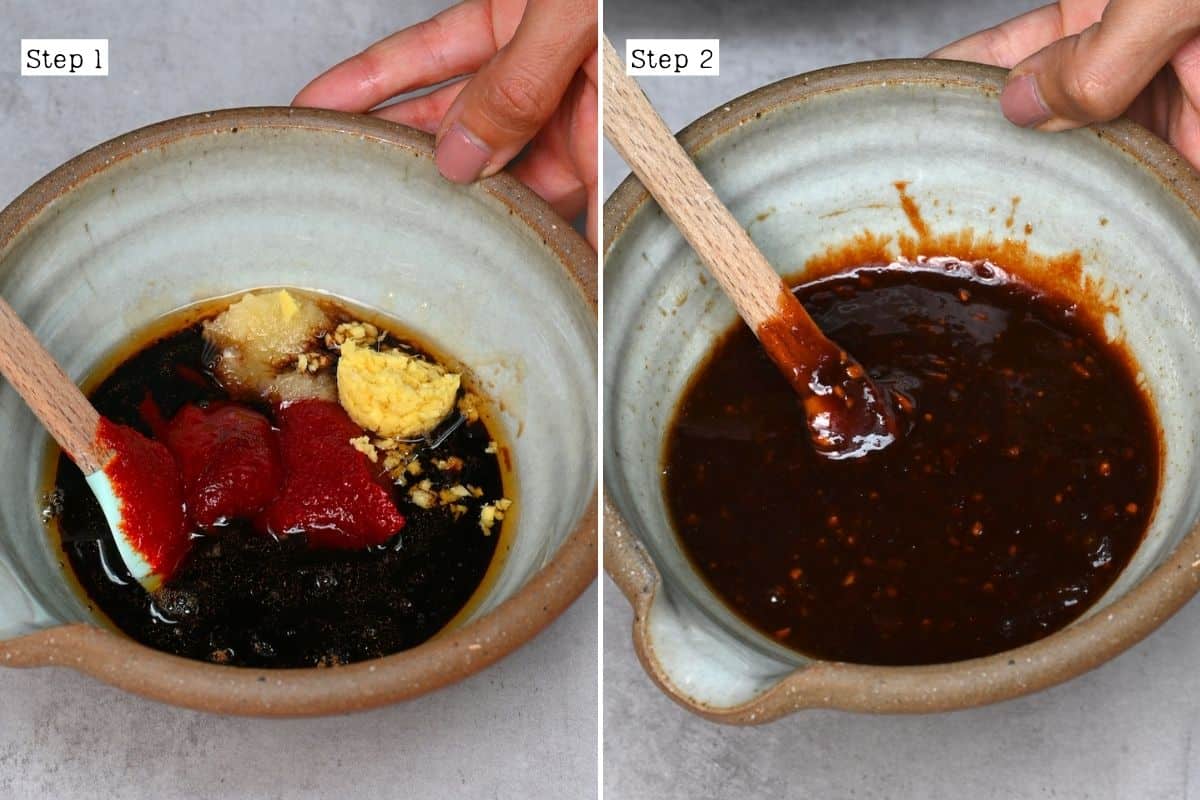
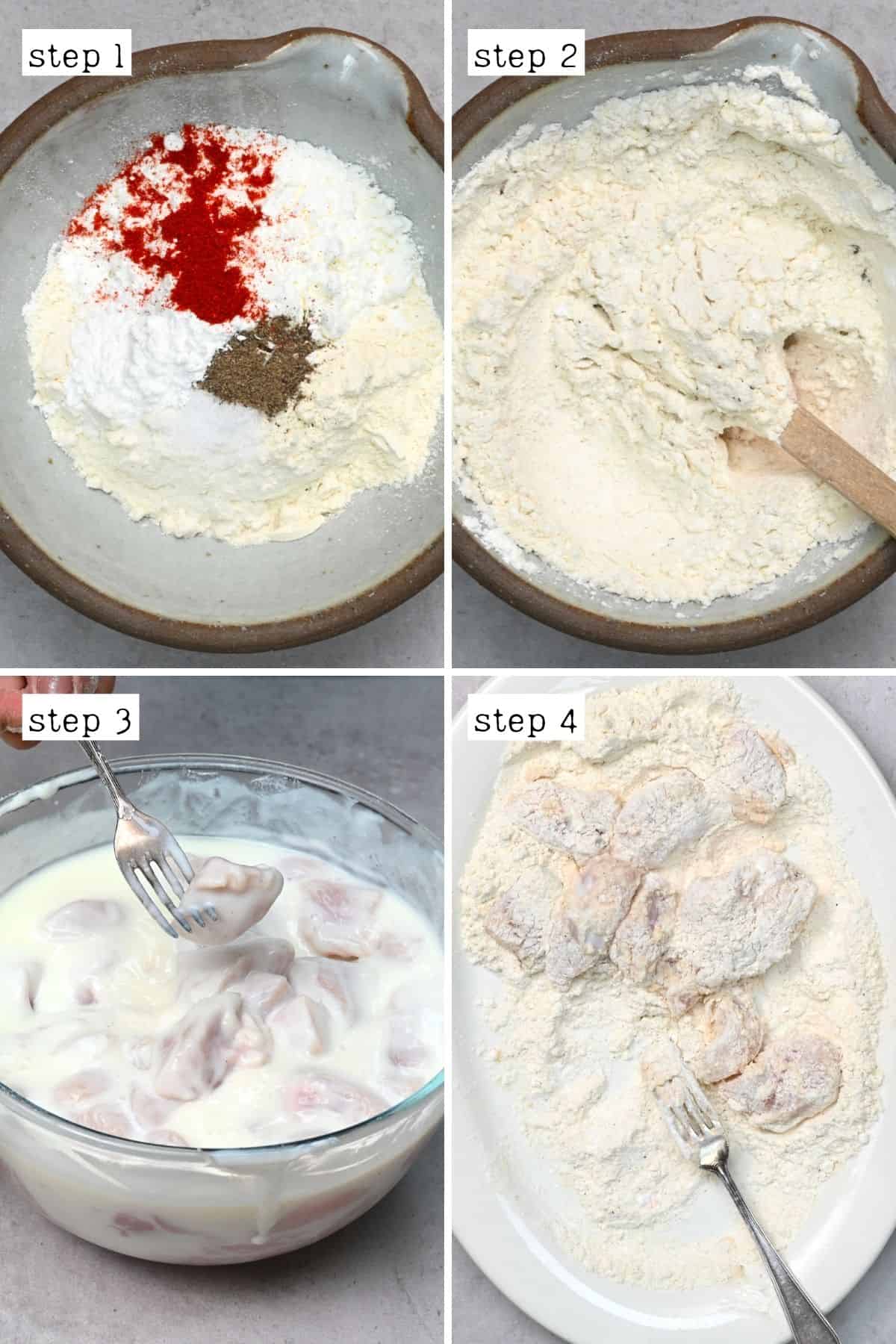
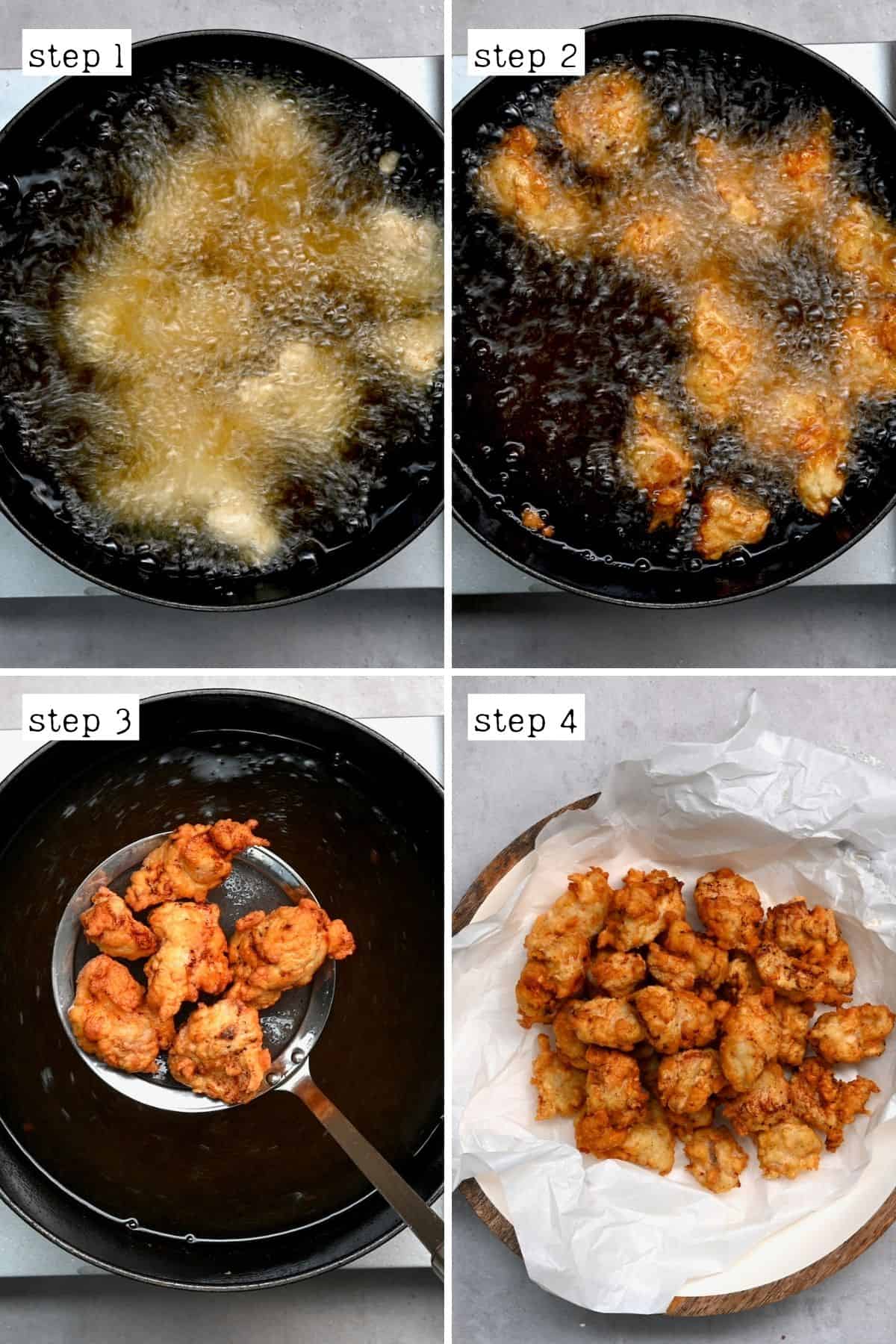
Comments
Post a Comment